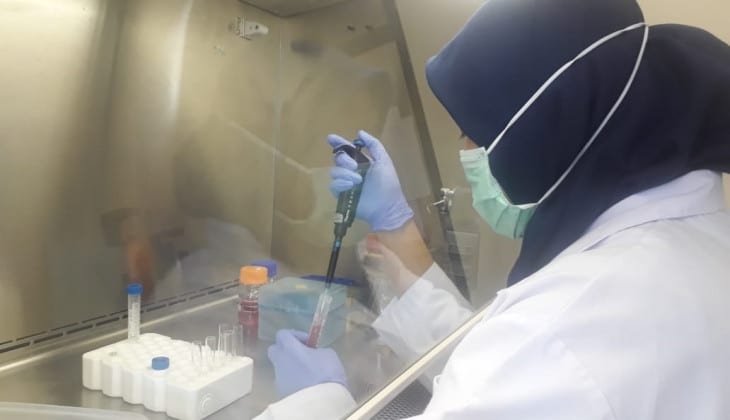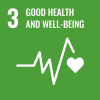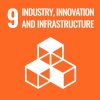
Cancer is a world problem that has killed 9.6 million people in 2019. Chemotherapy is a method often taken to cure cancer, but chemotherapy instead meets resistance from the cancer cell itself. New therapy, therefore, needs to be developed, which includes drugs.
To respond to this matter, three Chemistry UGM students studied the synthesis method of 3-benzilidenisoindolinon.
“The derivative compound of isoindolinone, namely 3-benzilidenisoindolinon, is a drug compound with high activities including anti-cancer, anti-bacterial, and anti-hypertensive. So, we’d like to study it deeper,” said one of the students, Ifadatin Nida Dewi Anatasya Hapsari, Tuesday (20/8), on campus.
Ifada along with Dewi Anatasya Hapsari and Early Zahwa Alharissa did a 3-benzilidenisoindolinon synthesis starting from precursor formation, namely 3-benzilidenftalida. Next, the precursor is reacted with other materials with the help of a catalyst using one pot method reaction that is light induced.
According to Ifada, the one pot reaction is effective and suitable with the Green Chemistry principle because it is a reaction mechanism that is combining two reactions, nucleophilic addition and beta elimination reactions. The effectivity of one-pot reaction is visible from the yield or percentage of 3-benzilidenisoindolinon product result at 72 percent. This is considered high because the method has shortened the reactive phase that minimises side-effects so the end result can be of higher percentage.
The 3-benzilidenisoindolinon synthesis reaction with one-pot method that is light induced also employs environmentally friendly catalysts, simple materials, and non-extreme reaction conditions. These are all the positive values of this method compared to others.
Alharissa added the light induced one-pot reaction is potential to be developed in Indonesia because the country has relatively stable sunlight intensity, so this is easier to apply here.
With the funding from the Student Creativity Programme of the Higher Education Ministry, the students did the synthesis and tested the biological activities (anticancer) through MTT assay to breast cancer cells, T47D.
They came with the result of gold powder of 72 percent result whose structures have been confirmed by Fourier Transform Infra-Red (FT-IR), Hydrogen-Nuclear Magnetic Resonance (1H-NMR) and Carbon Nuclear Magnetic Resonance (13C-NMR). The compound that is synthesised has a value of IC50 at 19 μg/mL which is still included in the category of anticancer active compound.
“The development of 3-benzilidenisoindolinon synthesis method will enable anticancer compounds synthesis that functions as anticancer drugs. Hopefully this is more effective than conventional chemotherapy,” she said.



